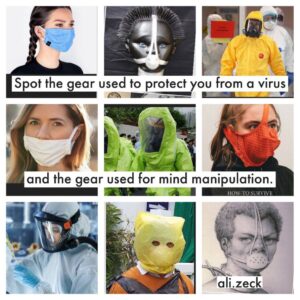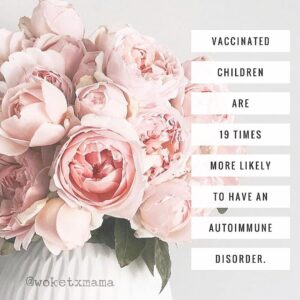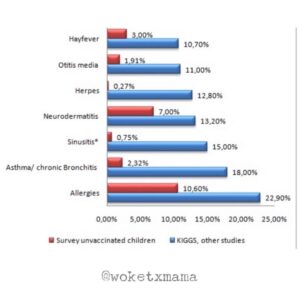
1. Surgeons have been using surgical masks since their introduction in 1897. It has for some years been customary for surgeons and nurses to wear surgical masks in the operating theatre and to change masks part of the way through any procedure lasting more than a few hours. The dangers associated with mask wearing were assessed by five doctors and published in the journal Neurocirugia in 2008.
Although it is customary for operating theatres to be fitted with air conditioning systems, the writers of the article, entitled, Preliminary Report on Surgical Mask induced Deoxygenation During Major Surgery, pointed out that it is known that heat and moisture are trapped beneath surgical masks and concluded that ‘it seems reasonable that some of the exhaled carbon dioxide may also be trapped beneath them, inducing a decrease in blood oxygenation’.
A total of 53 surgeons, of both sexes, all employed at university hospitals and aged between 24 and 54 years of age were tested. All were non-smokers and none had any chronic lung disease. The test involved pulse oximetry before and after the course of an operation. The study showed that the longer a mask was worn the greater the fall in blood oxygen levels. This may lead to the individual passing out and it may also affect natural immunity – thereby increasing the risk of infection. The masks used were disposable, sterile, one-way surgical paper masks. To eliminate the effect of dehydration over a several hour surgical operation, the surgeons were allowed after every hour to drink water through a straw.
The authors of the paper concluded that, ‘When the values for oxygen saturation of haemoglobin were compared, there were statistically significant differences only between preoperational and post operational values. As the duration of the operation increases, oxygen saturation of haemoglobin decreases significantly.’

2. This quote is taken from New England Journal of Medicine: ‘We know that wearing a mask outside health care facilities offers little, if any, protection from infection. Public health authorities define a significant exposure to covid-19 as face to face contact within six feet with a patient with symptomatic covid-19 that is sustained for at least a few minutes (and some say more than 10 minutes or even 20 minutes). The chance of catching covid-19 from a passing interaction in a public space is therefore minimal. In many cases the desire for widespread masking is a reflexive reaction to anxiety over the pandemic.’ The reference is: M.Klompas, C.Morris et al ‘Universal Masking in hospitals in the covid-19 era’ – New
England Journal of Medicine 2020

3. It is possible that wearing a mask for hours at a time could cause pulmonary fibrosis. In August 1988, the proceedings of the VIIth International Pneumoconioses Conference included details of three cases of pulmonary fibrosis, thought to be due to exposure to synthetic textile fibres. The first was a woman of 52 who had a dry cough with increasing difficulty in breathing. Changes were visible on an X-ray. The woman had been working in a textile shop for 15 years where her job was measuring and cutting cloth – mainly synthetic materials. The second patient was a woman of 66 who also had difficulty in breathing. The lungs of this patient also showed X-ray changes. She was also involved in cutting and measuring synthetic fabrics. A third woman, aged 47, had bilateral pulmonary fibrosis. Studies have shown that loose fibres are seen on all types of masks and may be inhaled causing serious lung damage.
4.People who cough and sneeze into their mask increase the risk of a build-up of fungi and bacteria – which can lead to dangerous chest infections.
5. In 2015, the British Medical Journal published a paper entitled, A Cluster Randomized Trial of Cloth Masks Compared with Medical Masks in Healthcare Workers. The paper was written by nine authors from the University of New South Wales, the University of Sydney, the National Institute of Hygiene and Epidemiology in Vietnam and the Beijing Centers for Disease Control and Prevention in China. The aim of the study was to compare the efficacy of cloth masks to medical masks in hospital health care workers. The study, which was extensive, concluded that the results caution against the use of cloth masks.

‘This is an important finding to inform occupational health and safety,’ concluded the authors. ‘Moisture retention, reuse of cloth masks and poor filtration may result in increased risk of infection.’ And the authors added: ‘…as a precautionary measure, cloth masks should not be recommended for health care workers, particularly in high risk situations, and guidelines need to be updated’.
For the remaining 95 facts, click here!
Source: Dr. Vernon Coleman
Tag: immune system
vaccination is {NOT} immunization

No child is born with an intact immune system. During the first 2 years of life the immune system is trying desperately to organize. Despite extravagant claims by the medical community, how that immune system is actually assembled by the body is still largely unknown.
⠀⠀⠀ ⠀
We could study our entire lives and barely scratch the surface of God’s design.
⠀⠀⠀ ⠀
What IS known for certain is that subjecting the infant’s immune environment to an array of man-made pathogens, preservatives, and adjuvants absolutely can have a deleterious [harmful; injurious] effect on the formation of that child’s brain and nervous system. All scientists – including the vaccine manufacturers – admit as much. Doctors ARE speaking out.
For more information, I highly recommend watching The Truth About Vaccines series.
⠀⠀⠀ ⠀
source:
Tim O’Shea, Vaccination Is Not Immunization: The War on Children and The Truth About Vaccines (series)
auto{immune} disorders

There is an ongoing survey in Germany that compares the long term health of 17,641 vaccinated children with that of 15,320 unvaccinated children.

The survey shows that vaccinated children are:
⠀⠀⠀ ⠀
Twice as likely to have allergies
7 times more likely to have asthma/chronic bronchitis
3 and half times more likely to have hayfever
3.8 times more likely to have Hyperactivity
19 times more likely to have an Autoimmune disorder
10 times as likely to have Skoliosis
11 times as likely to have Epilepsy/Seizures
Twice as likely to have Migranes
And… two and a half times more likely to have Autism.

Survey: http://www.vaccineinjury.info/survey/results-unvaccinated/results-illnesses.html
⠀⠀⠀ ⠀
There is also a study that backs up the results of the above survey but because it exposed the lie/party line, Big Pharma had it REMOVED. Shocking, no?
 Fortunately, a record was made before it was removed so if you don’t trust surveys this is for you: http://thefreethoughtproject.com/vaccinated-study-pulled-internet/
Fortunately, a record was made before it was removed so if you don’t trust surveys this is for you: http://thefreethoughtproject.com/vaccinated-study-pulled-internet/
⠀⠀⠀ ⠀
Finally, we have undeniable proof that the pharmaceutical propaganda of “vaccines are safe” is unequivocally false.
 The combined profits for the ten drug companies in the Fortune 500 ($35.9 billion) were more than the profits for all the other 490 businesses put together ($33.7 billion) [in 2002]…
The combined profits for the ten drug companies in the Fortune 500 ($35.9 billion) were more than the profits for all the other 490 businesses put together ($33.7 billion) [in 2002]…
⠀⠀⠀ ⠀
It is simply no longer possible to believe much of the clinical research that is published, or to rely on the judgment of trusted physicians or authoritative medical guidelines. I take no pleasure in this conclusion, which I reached slowly and reluctantly over my two decades as an editor of The New England Journal of Medicine…

 Marcia Angell, author of
Marcia Angell, author of
The Truth About the Drug Companies: How They Deceive Us and What to Do About It
vaccination is {not} immunization

Vaccination is not immunization.
⠀⠀⠀ ⠀
Did you know that immunization has nothing to do with vaccination? We immunize ourselves through natural exposure to viruses all around us, building lifelong antibodies. God, our creator, designed a rather robust immune system – immunization without vaccination. When building immunity, gut health is a great place to start.
⠀⠀⠀ ⠀
Vaccination, a man-made toxic brew of aborted fetal cells, dog kidney, aluminum, polysorbate 80 & 20, calf serum, egg components, etc., cripples the immune system, making us vulnerable to other infections. Injection, an unnatural pathway, may give short-term, artificial antibodies, but at what cost? MS, eczema, seizures, encephalitis, transverse myelitis, otitis media, diabetes 1, asthma, food allergies, leukemia, ADD, ADHD, autism… and even death.
⠀⠀⠀ ⠀
Did you get flu shots in previous years? That means your immune system is less able to defend you against flu this year.
⠀⠀⠀ ⠀
…participants who were previously vaccinated mounted a significantly less robust (immune) response when compared with those who were unvaccinated. …participants that were previously vaccinated, (antibody) titers were significantly less robust after vaccination… which indicated that an influenza vaccination in the previous season diminished the vaccine-induced antibody response in the following year…”
⠀⠀⠀ ⠀
https://www.infectiousdiseaseadvisor.com/home/topics/respiratory/influenza/repeated-vaccination-against-influenza-may-contribute-to-diminished-response/
⠀⠀⠀ ⠀
When I visited our new family doctor 2 yrs ago, his first questions were: How is the stress in your life? Are you eliminating? How is your marriage? Do you know your vitamin D levels? Are you sleeping at night?
⠀⠀⠀ ⠀
There was no mention of being current on vaccines. Even though his little government run clinic was covered in vax advertising, he personally calls them “trash.”
⠀⠀⠀ ⠀
If we care for our immune systems, our immune systems will care for us. We can start by avoiding vaccination. Amen?!
⠀⠀⠀ ⠀
What do you do to maintain your family’s immune systems? Especially during “less-sunlight-high-sugar-intake-season” – err, I mean “flu season.
woketxmama
Autoimmunity appears from… ?

Raise your hand if you suffer with an overactive immune system!
Repeated immunization with antigens causes systemic autoimmunity in mice otherwise not prone to spontaneous autoimmune diseases.
Systemic autoimmunity appears to be the inevitable consequence of over-stimulating the host’s immune ‘system’ by repeated immunization with antigens, to the levels that surpass system’s self-organized criticality.
woketxmama
Source:
PMID 20046868
https://www.ncbi.nlm.nih.gov/m/pubmed/20046868/